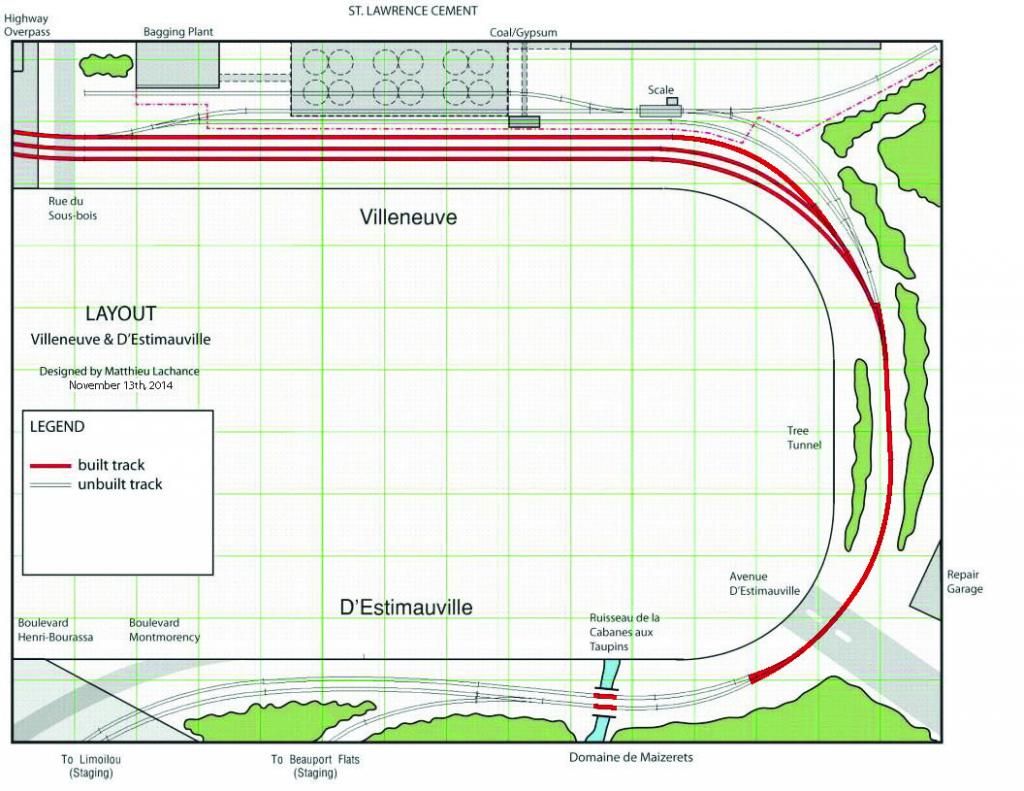We did some
significant progress yesterday. Bridges over Rivière de la Cabane au Taupier
were installed to span the last obstacle on the layout. Now track laying can be
done without any further benchwork modifications. That’s a great relief! The
update plan shows in red what has been done during the last month. The next
step is to build the staging and then, Ciment St-Laurent will be the last part
to be done before Christmas, if possible.
About the
river’s name…. Well, it’s complicated. This small brook sported many names over
the time and over different geographical areas.
Just to
list a few of them: Cabane au Taupier, then Ruisseau La Taupière, Les
Taupières, de la Cabane aux Taupières, aux Taupinières, Mastaï (from the nearby
asylum) and du Moulin (lots of mills were powered by this river). Out of
Beauport area, two names were used: Rivière des Commissaires (Commissaries’
River) in Charlesbourg and rivière Chalifour in Maizerets Domain (the exact
location we are modelling).
A “Taupier”
is a man whom profession is to eradicate moles. A “Taupinière” is a mole nest.
A “Cabane” is a small hut. When you piece things together, it became clear
that during the early settlement of the area, a man was hired by local
landloard to exterminate moles in the area and a dedicated building to house
him stood by the river. With time, the name was corrupt and original meaning
lost. Maizerets, then called Canardière was always a large rented piece of
agricultural land that served landlords and later Seminary of Quebec. It makes
senses that they hired someone to control vermin in the nearby wetlands.
 |
| Maizerets in 1960, railway on lower right, highway on upper left (credits: QQIBC) |
To stay
true with history, from now, the brook with be called on this blog “Rivière de
la Cabane au Taupier” that I would translate roughly in Mole Catcher’s Hut
River which is a colourful name. Mill’s brook and other generic names have no
appeal and hardly represent the fact the railway is crossing a wetland
inhabited by hundreds of ducks and moles. It is also the name that could be
found on Fire Insurances Maps from the 50s.
Model
railroading is something very “North American”. Scenery and names can really
help to locate it in this particular Quebec City area well-known for its
ancient French heritage. I guess most English-speaking readers won’t mind we
use “Rivière” instead of “River”. They are basically the same word with almost
the same pronunciation.

I was researching one of my wife's family ancestors a Pierre Paradis, and he purchased land next to this river, and I believe your explanation of the name is spot on. I was able to find a CBS news article that there still is a "molecatcher to the king" in France, who still uses mole traps designed in the 1600s.
ReplyDelete